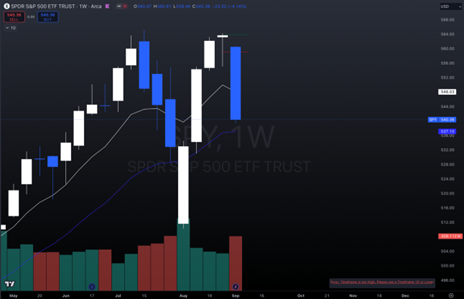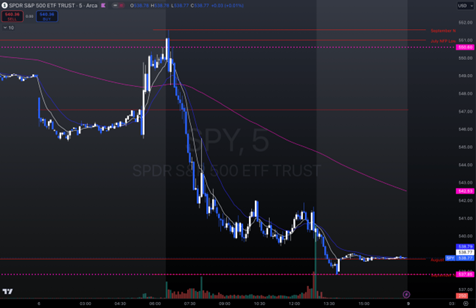In early September, the S&P 500 ETF Trust (SPY) had a rough week, losing 4.1%. There was a ton of momentum in one direction where it would have been easy to let short positions ride without worrying. Timing this is the difficult part. Price action can help, notes Gav Blaxberg, CEO of Wolf Financial.
Knowing when to step on that gas pedal and knowing when to hit the brakes can be tough. In this case, the week was one for hammering the gas pedal to the downside. How could you have known? Price Action.

First off, there is no way to know for certain if anything will happen. But you can be more confident with your positions and thesis when you use price action.
Most will argue volume or divergence, etc. Volume can be important, but also misleading, whereas price action never lies. In my opinion, you can very clearly see strong price action versus weak price action merely from looking at the candlesticks and their behavior.
Look at that Friday’s price action. Lower highs and lower lows all day – and every single pop was getting shorted all day.

This makes it much easier to sit in put options until you see the market break this structure and start making higher lows and higher highs.
On the flip side, say you wake up to a market that is ranging between its premarket high and low and can’t break/break down. Then you know to be taking profits quicker until you see the market structure change.
Price action never lies. That’s why I always follow it.










